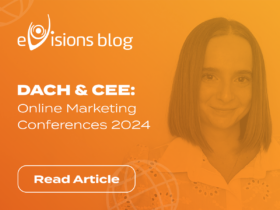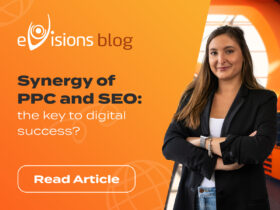Navigating Marketing Strategies in the Digital Age: Is It Time to Switch to Online?
16. 05. 2024 AutorIn our rapidly evolving world, businesses face daily decisions about where to allocate time and resources for maximum growth. This challenge extends to the realm of marketing, where a pivotal choice looms: embracing the innovative world of online marketing or sticking with familiar offline tactics? Discover the distinctions between these strategies and determine the best…
Content:
- Offline Marketing
- Advantages of Offline Marketing
- Online marketing
- Advantages of online marketing
- Comparing Offline and Online Marketing: What’s Best for Your Business?
What is offline marketing?
Offline marketing is a straightforward concept: it’s a marketing strategy that doesn’t rely on the internet or digital platforms to reach its audience. This method has ancient roots, tracing back to times when information about products was shared orally in marketplaces, often through shouted promotional slogans. Key tools of offline marketing include:
- Print advertising, such as newspapers, magazines, leaflets, and brochures.
- Broadcast media like TV and radio.
- Outdoor advertising, including billboards, posters, and signs.
- Direct personal methods like networking and personal selling.
- Participating in events like exhibitions and conferences.
In today’s digital-dominated world, traditional marketing might seem less relevant compared to its online counterpart. However, this perception isn’t entirely accurate. Offline marketing continues to be a vital component of a comprehensive marketing strategy.
82% of consumers continue to rely on print advertising when making their purchase decisions. (Source)
Benefits of Offline Marketing
- Capturing the local audience
Offline marketing excels in connecting with local customers. It’s particularly beneficial for small businesses like restaurants, retail outlets, or localized services. Traditional advertising tools—flyers, local newspapers, and billboards—often yield impressive results in these cases. Consider a scenario where you’re on a road trip: Google Maps can pinpoint gas stations and fast-food joints along your route. But what catches your attention more effectively? Is it this digital convenience, or the immediate visibility of roadside billboards and signs signaling the presence of these amenities nearby? - Building trust
Physical advertising materials like billboards and printed materials bolster brand recognition and convey a sense of reliability and trustworthiness. For a lot of individuals, a brand’s physical manifestation is a symbol of its authenticity. Advertising campaigns incorporating tangible elements, such as product samples or interactive booths at trade shows, provide customers with a hands-on experience that digital marketing simply can’t match. - The target audience does not move in the online world
If your target audience isn’t active online—for instance, the older generation—offline marketing methods like flyers, radio, or TV advertising may prove more effective. - Personal approach and relationships
Networking events, conferences, and face-to-face sales play a crucial role in cultivating personal relationships with clients, particularly in the B2B sector. Direct communication is far more effective in generating business compared to reaching out to “cold contacts” through platforms like LinkedIn.
Online marketing is at the forefront of today’s business strategy conversations. Let’s explore the advantages of using online marketing tools.
What is online marketing?
Online marketing encompasses all marketing activities that leverage the internet. Over the past decade, its popularity has surged significantly. Key tools of online marketing are:
- Websites and Search Engine Optimization (SEO)
- Social media platforms like Facebook, Instagram, and Twitter
- Email marketing
- Pay-Per-Click (PPC) advertising
- Content marketing, including blogs and ebooks
- Video marketing, such as YouTube videos and online advertisements
“The average person spends about 413 minutes per day on the internet.” (Source)
Benefits of online marketing
- Broader reach
Online marketing enables you to connect with a vast and varied audience, transcending geographical boundaries. Its most notable advantage is the ability to engage individuals who would otherwise remain unaware of your existence. This ensures continuous visibility, around the clock. Additionally, it’s exceptionally well-suited for businesses in operation or those aiming to rapidly venture into national or international markets. - Targeting and Measuring Campaigns
Using sophisticated data analytics tools, you can fine-tune your advertising targeting based on a variety of factors such as location, language, device type, time of day, browser preferences, and more. This precise targeting can significantly boost the impact of your advertisements. Furthermore, online marketing campaigns allow for immediate tracking of results and return on investment (ROI). This enables you to swiftly adjust your strategies and tactics in response to market feedback and data insights. In contrast, measuring the response rate and actual purchases resulting from print, TV, or radio advertising is much more challenging. - Cost Optimisation
Online marketing typically incurs lower costs than traditional marketing methods, making it a viable option for small and medium-sized businesses operating on tight budgets. When evaluated on a cost-per-view basis, digital advertising proves to be 3 to 50 times more cost-effective than its non-digital counterparts. Additionally, there is an abundance of free or low-cost tools available, such as Google Ads and Google Search Console, which are less accessible or non-existent in traditional offline marketing. - Rapid Response to Market Trends
Online marketing allows you to react faster to changing market trends and customer preferences and events or discussions on social media than offline marketing, allowing you to keep up with your competitors. This can involve creating content such as instant responses, images, videos or memes that reflect current trends.
Offline vs. Online Marketing: Which Works Better for Your Business?
Both online and offline marketing present their own sets of benefits and drawbacks. It’s important to recognize that no single approach is universally ideal; each situation demands a unique response, and the dynamic nature of marketing means that audience reactions can be unpredictable. The most effective marketing mix depends on the specific type of business, the target audience, and the prevailing market conditions.
The most successful strategy often involves integrating digital and traditional marketing efforts. Today’s marketing challenge centers on mastering the art of balancing these approaches and harnessing their combined strengths for optimal impact and reach.
“The secret lies in deeply understanding your customer base – their characteristics and preferences. Based on this understanding, you can develop a cohesive strategy that effectively merges the best aspects of both offline and online realms.”
Example: Integrating a billboard or TV advertisement with a coordinated online social media campaign that directs customers towards your products or services enhances the connection between your brand and its audience.
An Illustration of Synergy between Offline and Online Marketing Strategies
Online marketing offers extensive reach, precise targeting, measurable results, and cost efficiency. Conversely, offline marketing brings a tangible presence that can enhance brand trust and deepen connections with local clientele.
Whether it’s about boosting brand recognition, generating leads, or fostering enduring customer relationships, integrating offline and online marketing strategies presents boundless possibilities for your business’s growth and prosperity.










Komentáře